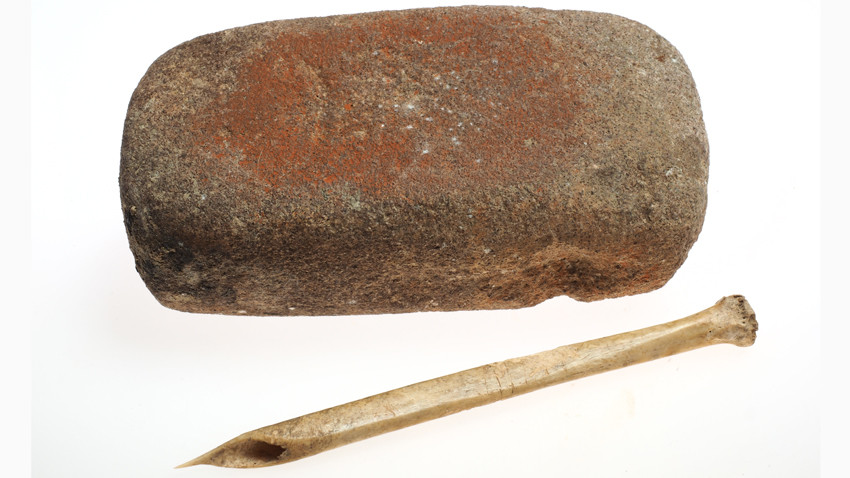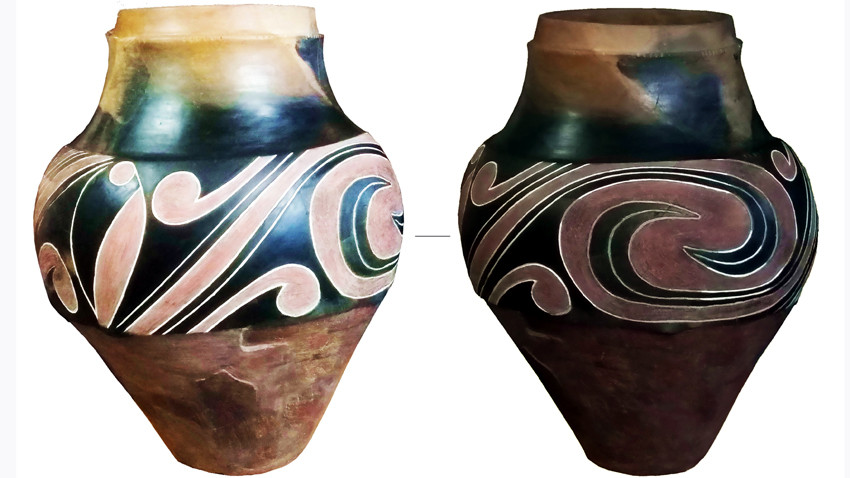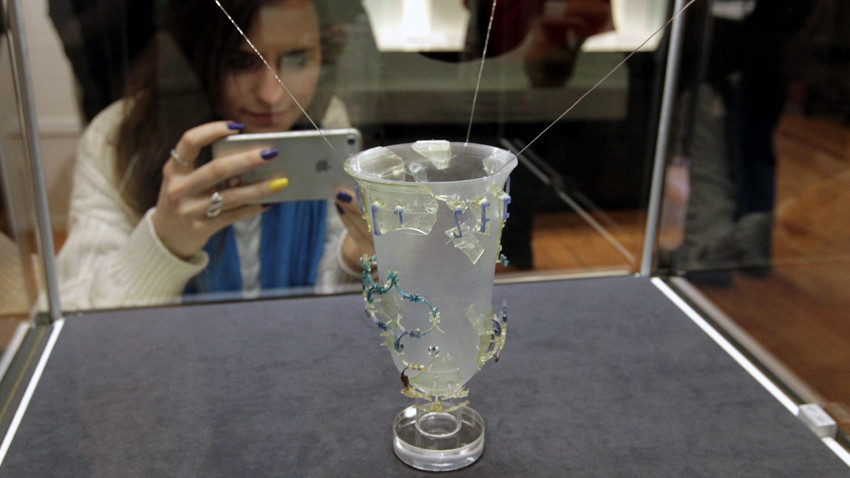The 12th National Archaeological Exhibition "Bulgarian Archeology 2018" has been opened at the National Archaeological Institute with Museum at the Bulgarian Academy of Sciences. Co-organizers are 19 other museums in the country. The exhibition allows for a number of discoveries that had not been "in the spotlight" to be presented. The exhibition presents 250 artifacts from 23 archaeological sites of different chronology, ranging from the Early Prehistory to the Middle Ages.
Among the most interesting sites is the Roman city-colony Ulpyia Oescus. It was built at the mouth of the Iskar River flowing into the Danube, which is near today’s village of Gigen, Pleven district. The city had an important place among the Roman territories in the Balkans. Prior to its foundation, the earliest camp of the Roman legion of the Lower Danube (5th Macedonian) was located.

Among the finds in 2018 was a marble head sculpture of an Emperor, probably Aurelian (270-275). He brought stability to the Roman Empire as he triumphantly dealt with attempts by various tribes to invade the Empire. This emperor organized the Lower Danube Army and border security after the abandonment of the Dacian province (present-day Romania) in the 3rd century.

 "In the period of the first war with the Goths in the 50s-60s of the 3rd century, Oescus was devastated and burned down. Then the Fifth Macedonian Legion returned to Oescus, and this happens during the rule of Aurelian.” In this way the head of research, Associate Professor Dr. Gergana Kabakchieva, explains the “imperial head”. Aurelian controlled the construction of the Lower Danube military camps and visited Oescus. The stylistic features of the sculptural work also point to this conclusion. The head of a statue was found just a few meters from the reception hall of the Grand Residence, which was the most representative building in Oescus in the 3rd century AD. No less interesting are architectural and building details made of marble and used for the renovation of the residence in Ulpiya Oescus. The reason for this was a visit of Emperor Constantine the Great (306-337) to Oescus for the opening of a bridge across the Danube in July 328 AD. The Emperor -Christian ordered the construction of the bridge because he believed that the Empire should not fight the "barbarian" peoples in the north but trade with them.
"In the period of the first war with the Goths in the 50s-60s of the 3rd century, Oescus was devastated and burned down. Then the Fifth Macedonian Legion returned to Oescus, and this happens during the rule of Aurelian.” In this way the head of research, Associate Professor Dr. Gergana Kabakchieva, explains the “imperial head”. Aurelian controlled the construction of the Lower Danube military camps and visited Oescus. The stylistic features of the sculptural work also point to this conclusion. The head of a statue was found just a few meters from the reception hall of the Grand Residence, which was the most representative building in Oescus in the 3rd century AD. No less interesting are architectural and building details made of marble and used for the renovation of the residence in Ulpiya Oescus. The reason for this was a visit of Emperor Constantine the Great (306-337) to Oescus for the opening of a bridge across the Danube in July 328 AD. The Emperor -Christian ordered the construction of the bridge because he believed that the Empire should not fight the "barbarian" peoples in the north but trade with them.

Emblematic for the prehistoric period in these lands is the "Big Island" hill in Durankulak, northeastern Bulgaria. Tattooing tools are among the curious discoveries related to life in old times. The instruments consist of a bone needle and a stone used for pigment grinding. The tools date back to the early Eneolithic Age, i.e. about 4500 BC and are perhaps the oldest testimonies about the art of tattoos. By comparison, the oldest mummies with tattooed skin were found in Egypt and date back to 3351 BC or afterwards.

Ornamented ceramic wares from Kozareva Mogila in southeastern Bulgaria /Bourgas region/ surprise with their beauty and perfection, especially given the early period of their creation – the end of the 5 millennium BC.

Jewelry found in the late antique and medieval fortress Bukelon near the village of Matochina, not far from today's border with Turkey is also of high artistic value.
The exhibition also presents a particularly valuable diatretum glass for the first time. A diatretum consists of an inner beaker and an outer cage with decorations. The artifact was unearthed in 1960 near the Bulgarian city of Yambol. This masterpiece was not meant for everyday life but for eternal life.

It was found in a tombstone dating back to the Roman Age – the beginning of the 4th century AD. The glass has recently been restored in Germany in the framework of a NAIM project. According to one of the hypotheses, it was created in Egypt or Syria. According to archaeologist Mario Ivanov, the technique of creating an open mesh of colored glass included cutting between the wall of the beaker and the ornaments and was actually a very delicate process.
 The occasion for organizing the exhibition was the Day of Archaeologists – February 14, marked in this country since 1970, after an appointment of the Bulgarian Academy of Sciences.
The occasion for organizing the exhibition was the Day of Archaeologists – February 14, marked in this country since 1970, after an appointment of the Bulgarian Academy of Sciences.
"For those of us, dedicated to archaeological science, this is an opportunity to feel as a whole, to see and evaluate the results of the work of our colleagues, as well as to remember that studying our past is not a race but a complex process," new head of NAIM, Associate Professor Hristo Popov said.
English: Alexander Markov
Photos: NAIM, BTA and private libraryThe Bulgarian Land Forces are celebrating their holiday today. A statement from the Ministry of Defense's press center notes that November 19, 2024 marks 139 years since the glorious victory at Slivnitsa and 146 years since the establishment of..
The book "Ten Great Friends of Bulgaria" by journalist Milena Dimitrova will be presented this evening at 6pm at the Sts. Cyril and Methodius National Library in Sofia. The book recounts the lives of ten people of different nationalities and eras, whose..
The Getty Museum in Los Angeles, USA, is hosting a webinar today entitled Who Were the Thracians? Professor of Classical and Ancient History Matthew Sears will discuss the Thracian legacy and its influence on ancient Athens. Sears is the author of..
On November 25, the Bulgarian Orthodox Church honours the memory of St. Clement of Ohrid – a distinguished archbishop, teacher and scholar. He was among..

+359 2 9336 661
